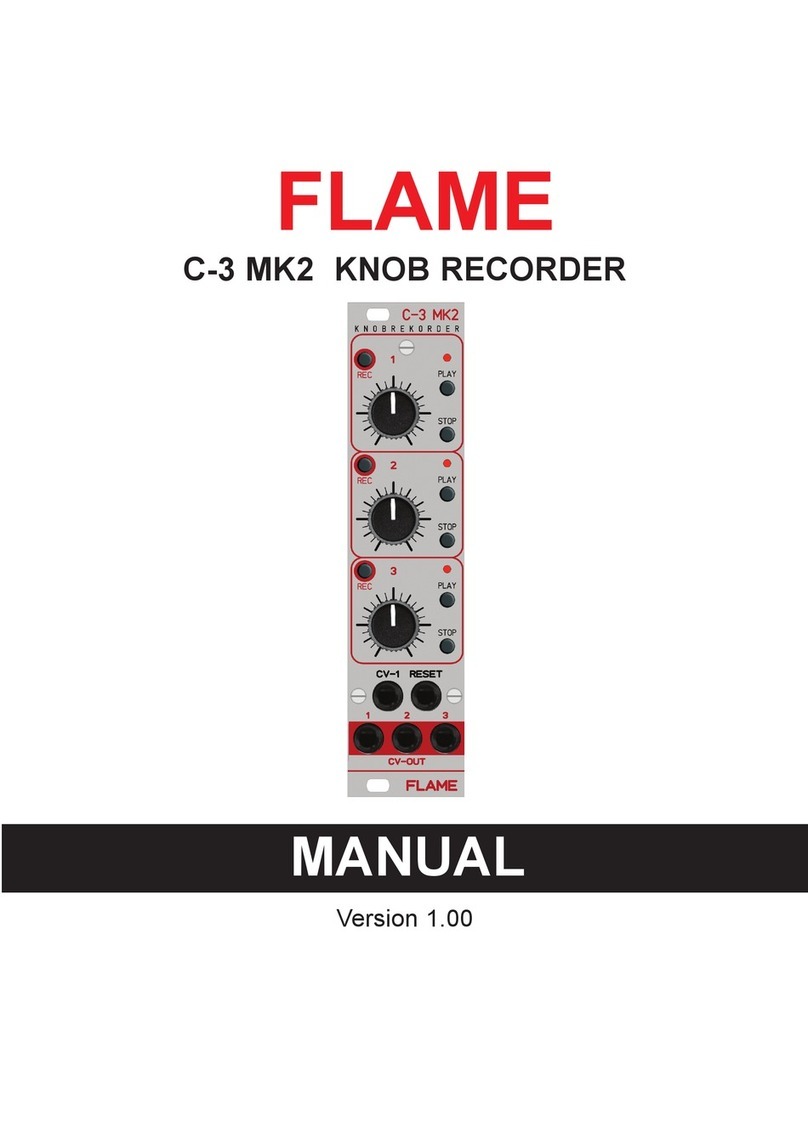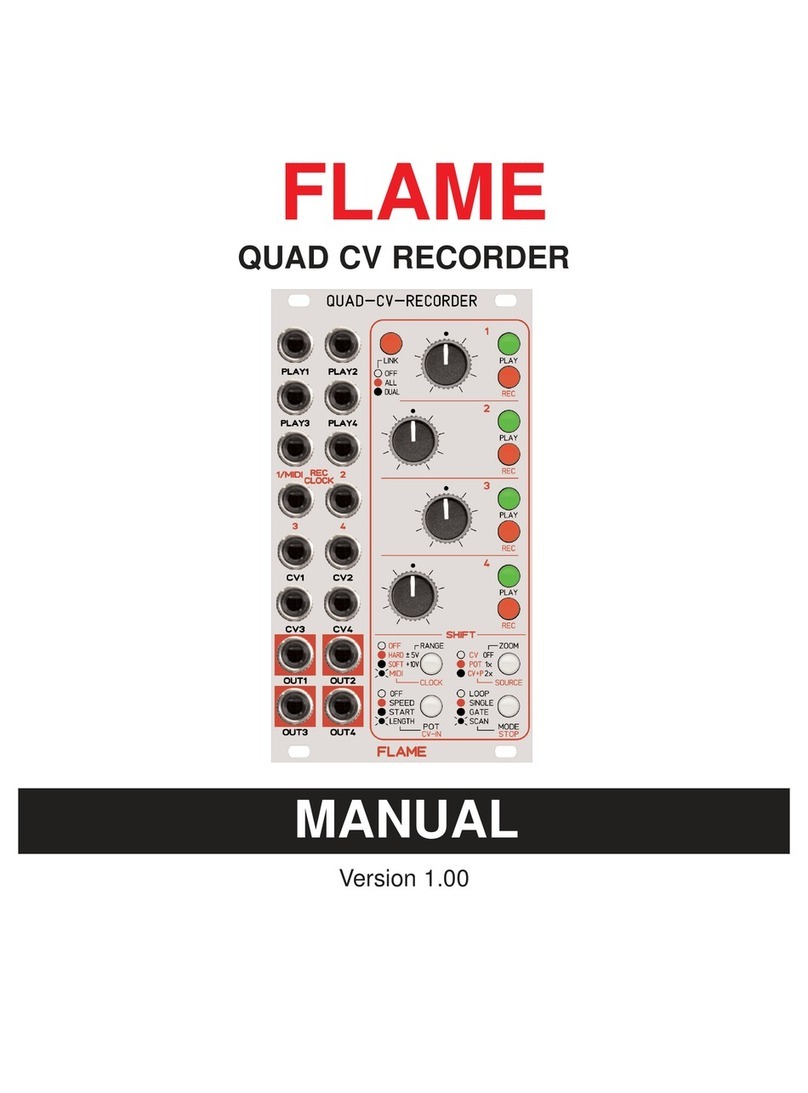
4. Appendix
4.1. Technical details
Connections:
Ribbon cable adapter for Doepfer bus +/-12Volt
Inputs: 4x Audio/CV (+/-5v), 1/8th inch mono jacks
2x Reset (0/+5v..10v), 1/8th inch mono jacks
2x Mix CV (+/-5v), 1/8th inch mono jacks
Outputs: 2x MIX (+/-5v), 1/8th inch mono jacks
Control elements:
6 push buttons
2 knobs for mix and speed
2 LED’s
Resolutions: AD/DA converter: 12bit, Sample rate: 250Hz
Current consumption: max + 40mA / - 10mA
Size: Euro rack format 3U / 6HP 30x128,5x40 mm
4.2 Warrenty
Beginning from the date of purchase a 2-year warranty is guaranteed for this device in case of
any manufacturing errors or other functional deficiencies during runtime.The warranty does not
apply in case of:
- damage caused by misuse
- mechanical damage arising from careless treatment (dropping, vigorous shaking, mishandling, etc)
- damage caused by liquids penetrating the device
- heat damage caused by overexposure to sunlight or heating
- electric damage caused by improper connecting
(wrong power supply/ jacks/ MIDI connections/ voltage problems).
If you have any complaints please contact your dealer or send an e-mail to:
service@flame-instruments.de
4.3 Terms of production
conformity: CE, RoHS, UL
4.4 Disposal
The device is produced with RoHS-conformity (subject to the regulations of the European Union)
and is free of hazardous substances (like mercury, plumb, cadmium and hexavalent chrome).
But electronical scrap is hazardous waste. Please don't add this to consumer waste. For an
environment friendly disposal of waste please contact your distributor or specialist dealer.
4.3 Support
Updated and additional informations, updates, downloads and more see:
www.flame-instruments.de
4.4 Acknowledgment
For help and assistance big thanks to: Alex4 and Schneiders Büro Berlin, Shawn Cleary
(Analogue haven, Los Angeles), Thomas Wagner, Robert Junge, Anne-Kathrin Metzler, Lena
Bünger and Felix Bergleiter.
8



























